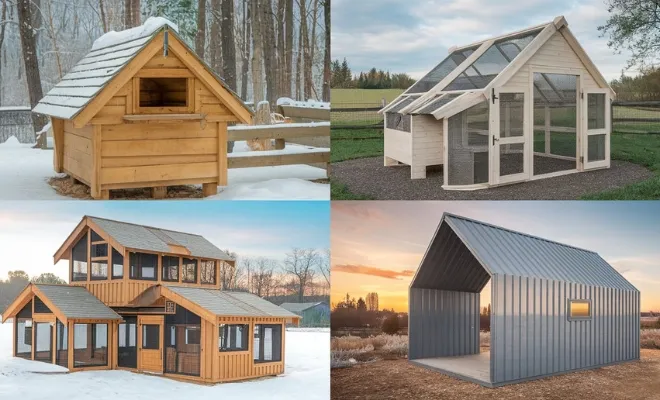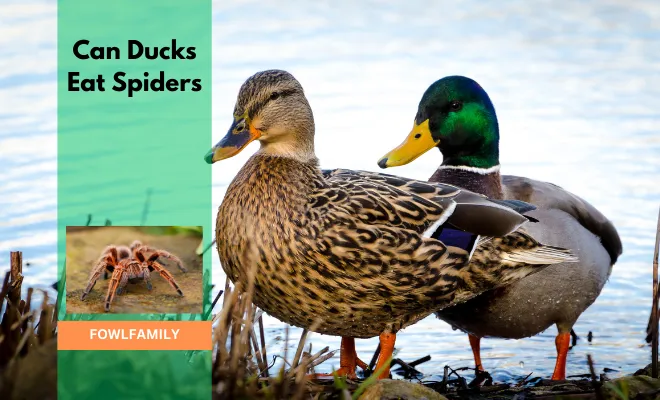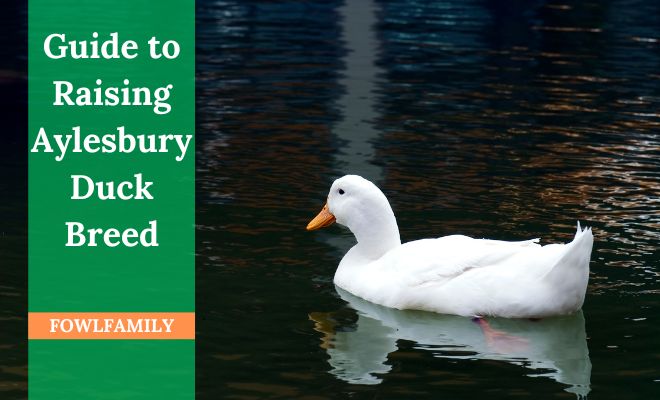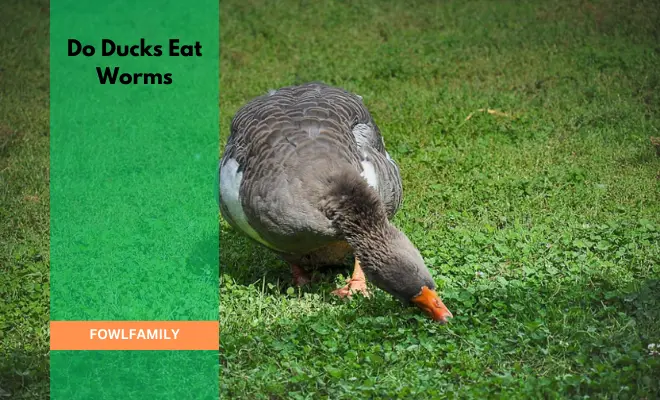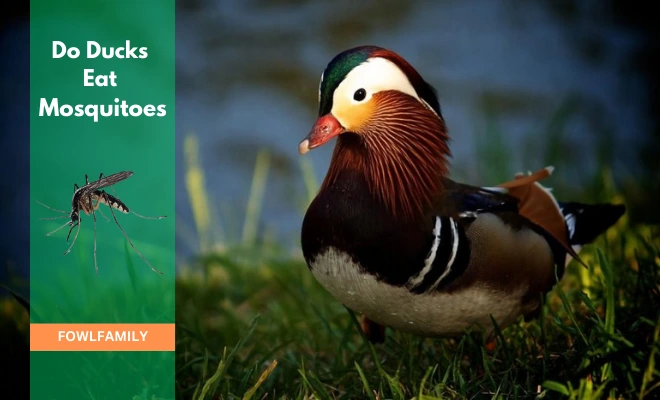6 Duck Feeder Ideas (Including DIY)
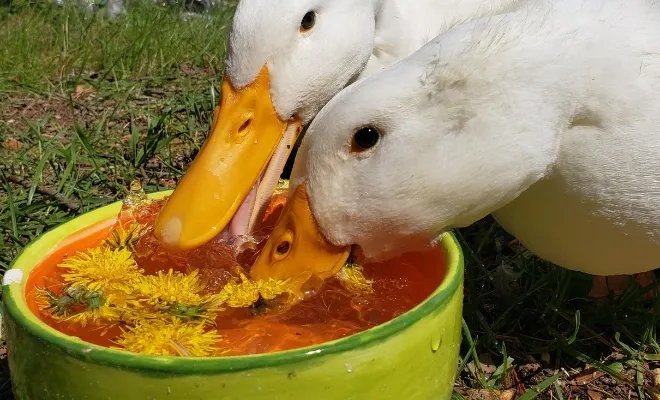
Backyard duck raising is a hassle if you don’t have good feeder ideas. Since they’re absolutely necessary, the feeder ideas might bring some stability to the entire mess up.
So, what are the best duck feeder ideas? Well, it isn’t specific. Individuals might have their own way of making duck feeders with different things. I prefer the POV feeders, hanging buckets, and the plastic bottle feeder. These things aren’t too costly, but come up with an excellent feeding solution.
I hope these 6 feeder ideas can help you find the perfect option. It won’t matter whether you have a few pet ducks, a small hobby flock, or a large breeding operation. Keep on reading to learn some personalized ways to make duck feeders.
Table of Contents
Duck Feeder Ideas: What Kind of Feeder Ducks Need?
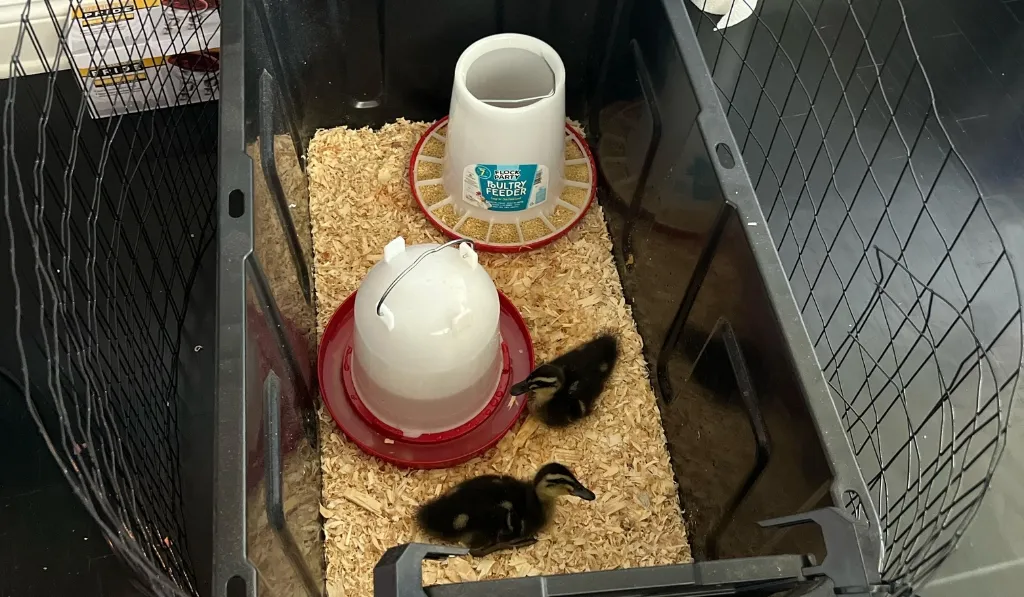
Well, before the discussion starts, let’s first know what type of feeders ducks require. Here are some of the key needs –
- Accessibility – The feeder should be at an appropriate height for the ducks to dip their heads in and reach the feed easily. For adult ducks, the lip of the feeder should be at about the height of the duck’s back.
- Spill Resistance – Ducks dabble in their feed with their bills, which causes some spillage. Choose a feeder with a deep base and steep sides to minimize waste. Anti-tip designs are also helpful.
- Durability – Ducks use their bills to forage feed aggressively. The feeder must withstand biting and prying without leaking or breaking. Metal and thick plastic tend to hold up best.
- Cleanliness – The feeder needs to keep contents dry and prevent soiling. A snug-fitting lid and raising the feeder off the wet ground are ideal.
- Size – Make sure the feeder is big enough to accommodate your flock. As a general rule, allow 1-2 inches of linear feeder space per duck.
6 Best Duck Feeder Ideas
No more tales and facts telling. Let’s have a look at my ideas for you.
Idea 1: Simple Pan Feeding
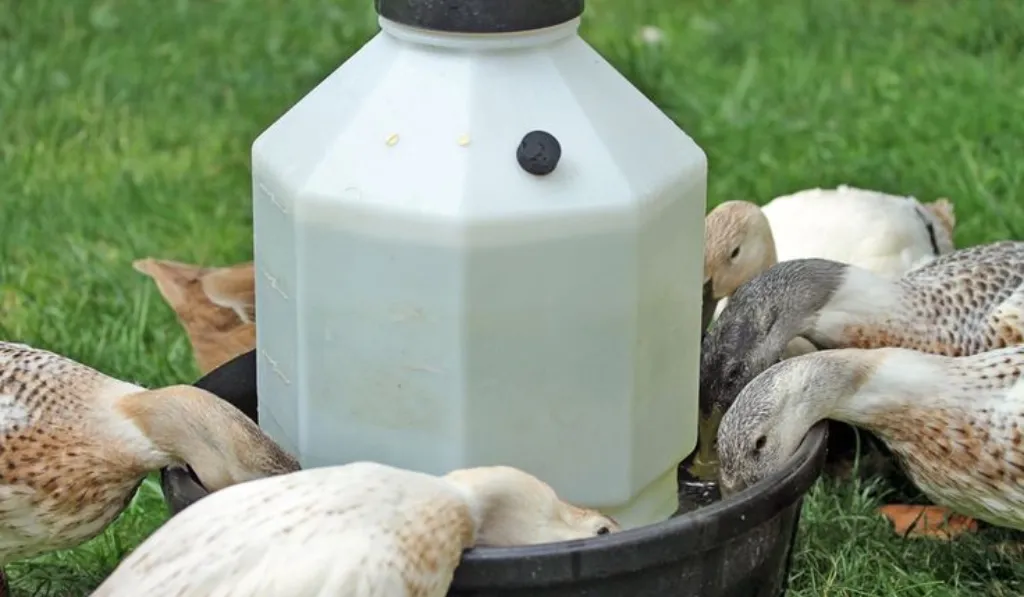
Shallow metal or plastic pans from your cupboard can work as improvised duck feeders in a pinch. Spread a layer of feed evenly across the pan. The sides help contain the feed in one place.
Just be sure to check it often, as ducks can quickly tip smaller pans over in pursuit of every last morsel. Anyway, more extensive options, like a foil roasting pan, can minimize spills.
Idea 2: Hanging Bucket or Basket
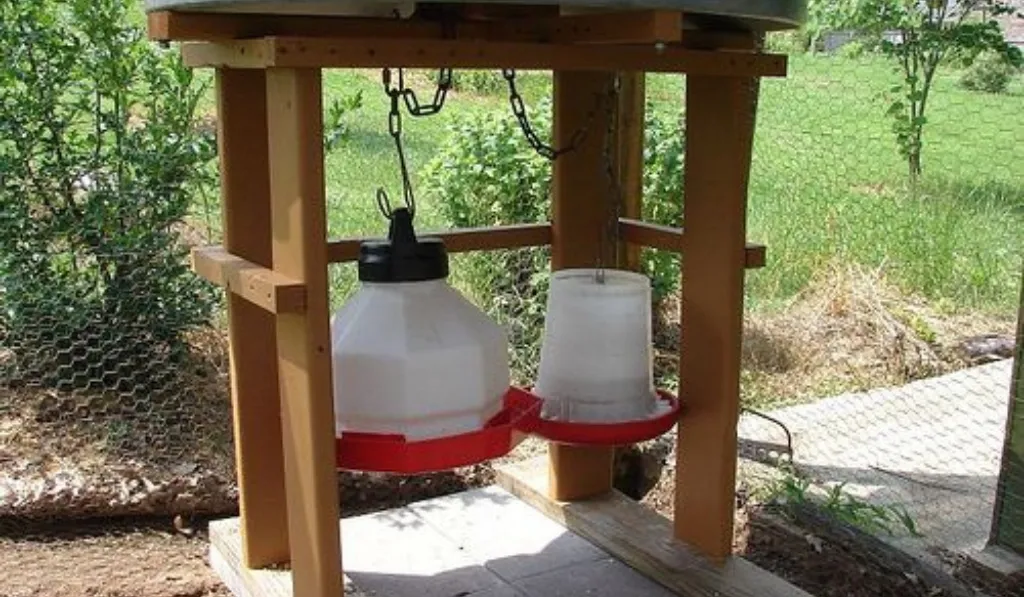
A hanging poultry feeder offers a good compromise between cost and utility. Look for durable plastic or metal materials that are weather and chew-resistant.
Buckets or wire mesh baskets suspended at duck height allow easy access. You can find these pre-made for poultry. You can improvise your own design securely attached to a stand, hook, or Chain as well.
They keep feed cleanly contained off the ground and make refills fast with a detachable bucket.
You can find it readymade in a variety of marketplaces like Amazon. These feeders are durable, easy to operate, and highly recommended by experts.
Idea 3: The Plastic Bottle and Cement Combo
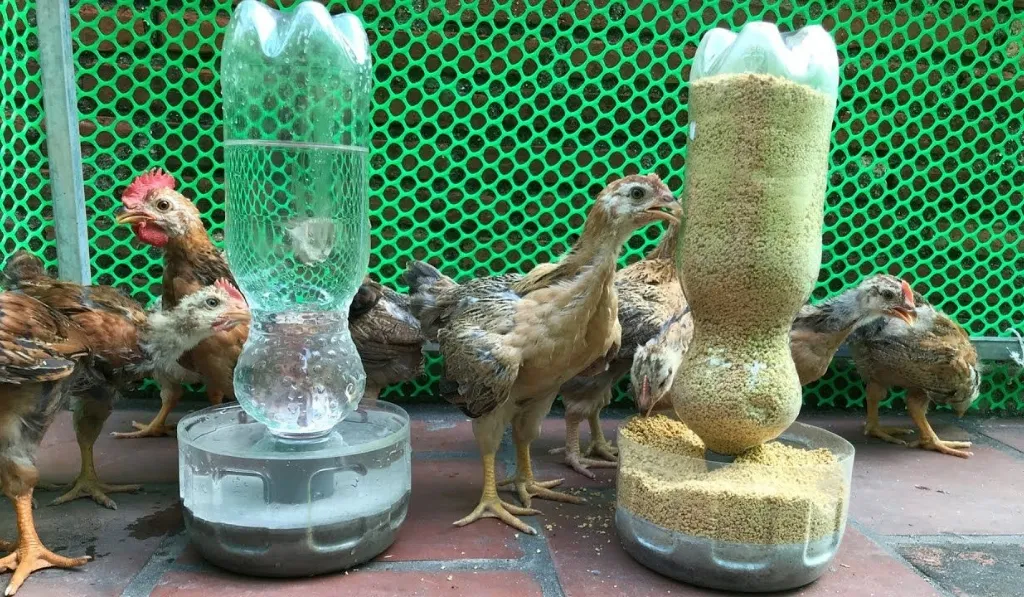
This is one of the kind of holiday DIY Duck Feeder Ideas. It’s simple yet easy to make. It’s effective as well. But how to make a plastic bottle feeder for ducks?
Well, take a couple of bottles (two or three is enough). Follow these steps now.
- First, cut off the lower part of the bottle. Measure how much should be the cutting of the lower part.
- Now, take another plastic pan or something like that. Take an appropriate amount of cement, like 100g or 200g of cement, and mix it with the water.
- Put the cement mix in the plastic pan and let it dry. Place the bottle in the middle of the pan. Make sure it’s tightly placed in the cement. It might take 18 – 24 hours to dry completely.
- Now, when the cement mix is dry, the feeder is almost ready. With a drill machine, make a couple of holes for the feeds to come out of the bottle and fall down in the artificial cement ground.
Still in confusion? No issues! You can watch this YouTube video, and I guess you’ll be all cleared up.
Idea 4: Floating Ducks Unlimited Feeders
These feeders are actually cool! These are portable, and you can set up these feeders in the water!
The floating design has slots around the bottom rim that dispense feed into the pond or pool wherever the ducks swim. They come in sizes holding up to 50 pounds of duck chow. This is constantly available to your flock even when they’re paddling around water.
Although the picture is about a swan, you can follow the same rule for your ducks to develop a feeder.
Idea 5: PVC Feeders
See, PVC feeders are surely the most famous ideas among any other Duck Feeder Ideas. all over poultry enthusiasts. But I’m suggesting it a little late because this thing requires a little patience and effort. Still, if you want to make one as a DIY project, here are the steps for you.
Supplies Needed:
1.5″ or 2″ PVC pipe (length depends on desired feeder size)
- PVC end caps
- PVC elbows, tees & 4-way connectors
- PVC glue/cement
- Wood board for mounting
Step 1: Cut PVC Pipe
Cut a length of straight PVC pipe. This will be the feed storage reservoir. The standard sizes between 18″ and 48″ work well.
Step 2. Attach Bottom End Cap
Glue a PVC end cap on one end of the straight pipe to seal the bottom. Allow the glue to dry completely.
Step 3. Add Feeder Openings
Glue PVC tees, elbows, or 4-way fittings along the straight pipe to create openings. Space evenly to allow feeding access for multiple ducks.
Step 4. Attach Removable Cap
On the top opening without glue, loosely fit a removable PVC cap to allow pouring feed in while keeping rain out.
Step 5. Mount Feeder
Screw a wood board spacer centrally behind the pipe’s mounting location. Then screw the feeder assembly securely to a fence, post, or wall at your ducks’ height.
Step 6. Add Feed and Enjoy!
Add duck feed to fill the reservoir. The feed will fall out for easy duck access as they feed. Check and refill routinely as needed.
That’s it! Customize dimensions or fittings as desired. Add wheels for mobility, or use all-white PVC parts to blend into white backgrounds. Have fun making an easy, handy PVC feeder for your flock!
Don’t worry if you still don’t get it or if it seems tough for you. Here’s a guideline for you:
Idea 6: Five Gallon Bucket Feeder
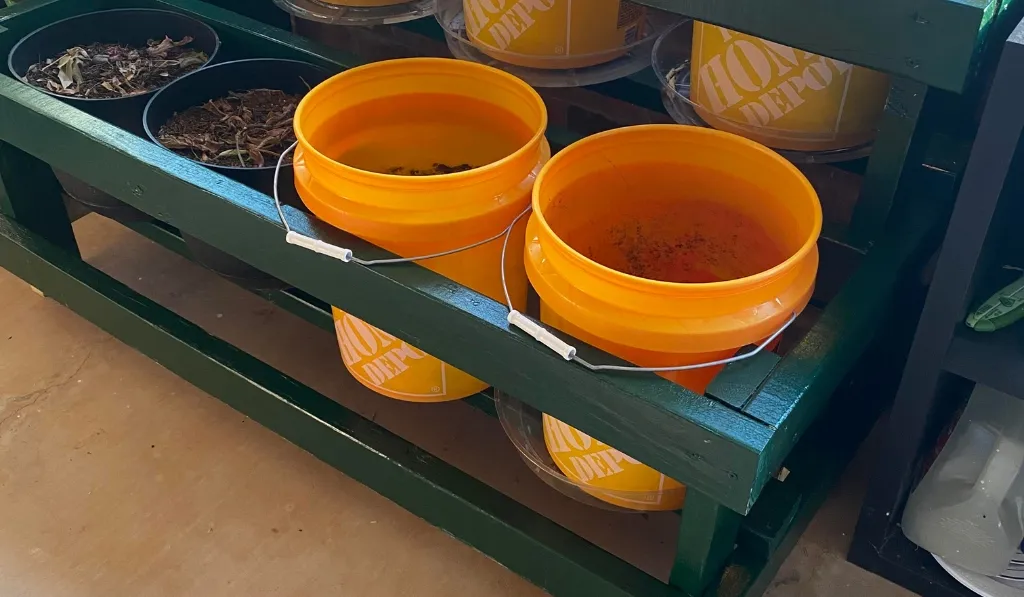
Well, this is another DIY feeder idea for your backyard flocks. However, it requires a little expertise. Still, you may try it. The following information might come in handy for you if you’re a noob on this thing.
Supplies Needed:
- 5-gallon plastic bucket
- 3” or 4” PVC pipe section
- Power drill with a hole saw bits
- Sandpaper (optional)
- Gorilla glue or epoxy
Step 1: Cut and Prepare Bucket
Cut out the solid bottom center of the bucket, leaving a 2-3 inch rim. This creates the feeding basin. Sand any rough plastic edges smooth.
Step 2: Cut and Prepare PVC Pipe
Cut a length of PVC pipe about 1 foot long. On one end, angle the cut to create a sloped feeding lip.
Step 3. Drill Holes
Measure and mark hole locations on the PVC pipe. Space evenly to allow multiple ducks feeding access. Using a hole saw bit the same diameter as the pipe, drill out holes for ducks to feed.
Step 4. Join Components
Fit the pipe into the bucket bottom’s center to test alignment. Make sure the pipe is dry. Apply gorilla glue or epoxy generously. Insert the pipe section snugly into the hole.
Step 5: Allow to Set
Leave glued feeder components alone overnight to fully cure and harden the bond.
Once set, fill the bucket basin with duck feed. The attached PVC pipe allows ducks to access the feed easily through the holes. Besides, these feeders keep contents protected from rain with the bucket rim.
Customize feeder sizes, materials, or hole patterns to suit your flock!
Here’s a video guideline for making such kind of duck feeder:
8 Reasons Why Are Duck Feeders Important
Correct duck feeder ideas and selection plays a key role in successfully raising backyard or commercial duck flocks by:
1. Preventing Waste
Well-designed feeders minimize wasted feed scattered on wet or dirty ground. This saves significantly on feed costs, typically 60-70% of the waterfowl production budget.
2. Containing Mess
Feeders with deep sides, lips, and anti-tip designs keep contents neatly where they belong. Less debris means less disease risk and ugly cleanup.
3. Avoiding Contamination
Covered feed storage keeps contents clean and dry. Automatic or hanging feeders further prevent ducks from soiling what they eat for healthier birds.
4. Managing Portions
Size-appropriate feeders allow for gauging consumption more accurately. Programmable and timed dispensers permit precise nutritional control.
5. Reducing Labor
Convenient feeders need less frequent filling and remain accessible even when you’re away. Automatic dispensing systems further lower daily workload so you can attend to other tasks.
6. Supporting Natural Behaviors
Systems mimicking foraging motivations keep ducks more content. Consider options facilitating flock feeding, swimming access, or working treats loose.
7. Preventing Hazards
Durable, non-tipping feeders designed specifically for ducks to minimize risks. The risks are mainly associated with broken glass or plastic bits that birds might ingest. A well-designed feeder ensures no choking troubles!
8. Optimizing Efficiency
Suitable feeder selection improves growth rates and feed conversion ratios. Healthy, productive ducks repay your investment many times over.
Recommended Articles:
FAQs
Keep your eyes on this Q&A section. We covered some of the most asked questions here.
Q: What are the best materials for duck feeders?
Durable plastic, galvanized steel, and stainless steel resist corrosion and are easy to sanitize. However, avoid lead paints or zinc coatings, which can be toxic. Thick rubber also withstands abuse. Ensure all hardware is bird-safe.
Q: How much feeder space do ducks need?
Allow a minimum of 1.5 linear inches per duck if both sides are open. So, 25 ducks need about 37 inches of accessible openings. Reduce aggression by permitting all birds to eat at once.
Q: Where should duck feeders be located?
Near water when possible, ducks naturally eat when swimming and foraging. For land-based flocks, keep feeders under or near shelters. Close proximity to nest boxes in breeding operations is ideal.
Q: How often should I refill duck feeders?
Check feeders daily and top off when levels drop below around 20% capacity. Completely change out any feed that becomes wet, soiled, or moldy. Fresher feed keeps better and encourages intake.
Bottom Line
I have shared some well-designed duck feeder ideas. I’m not saying this will surely tailored to your specific flock size. But I tried to keep it budget-friendly. The right feeders make daily care easier, keep birds healthier, minimize conflicts, and prevent waste.
PVC duck feeders require a little bit of effort and expertise. But plastic bottles and cement feeders are as famous as PVC. Anyway, it’s your decision at the end of the day. So, take time to consider how each option might function within your existing infrastructure. Utilize it to use for happy ducks and happier keepers alike.

